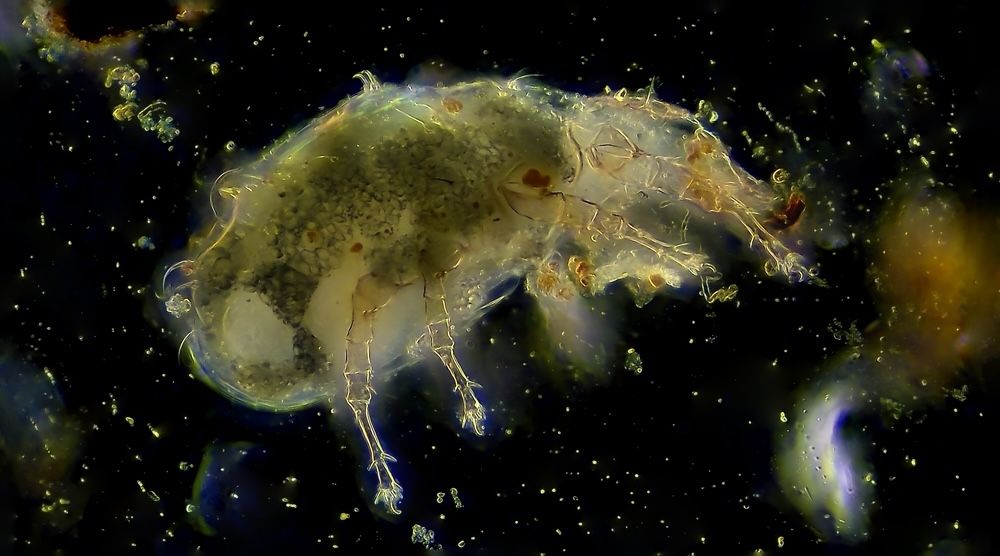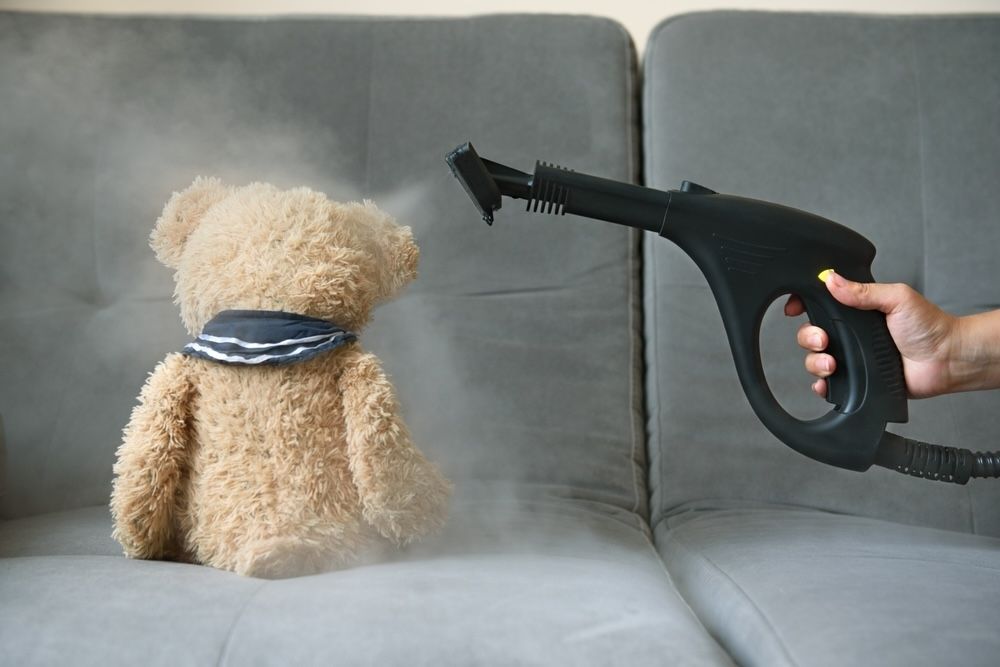The Hidden Dangers of Dust Mites: Identification, Prevention, and Eradication

Dust mites are microscopic creatures that thrive in warm, humid environments, primarily feeding on dead skin cells shed by humans and pets. These tiny pests are invisible to the naked eye, but their impact on health can be substantial. Dust mites are most commonly found in household items such as bedding, upholstered furniture, and carpets, where they can easily accumulate and multiply. Their presence in your home is not necessarily a sign of poor hygiene; rather, it reflects the environment's suitability for their growth.
Despite their small size, dust mites can cause significant health problems. They produce allergens that can trigger allergic reactions and asthma symptoms in sensitive individuals. Common symptoms include sneezing, runny nose, itchy eyes, and skin rashes. For those with asthma, exposure to dust mite allergens can lead to more severe respiratory issues, such as wheezing and difficulty breathing. Understanding the health risks associated with dust mites is crucial for maintaining a healthy living environment.
This article delves into the world of dust mites, providing you with essential information on how to identify, prevent, and eradicate these unwelcome guests from your home. We'll explore the conditions that promote dust mite infestations, the signs of their presence, and the best practices for reducing their numbers. By taking proactive steps to manage dust mites, you can significantly improve the air quality in your home and reduce the risk of allergic reactions and asthma attacks.
Whether you're currently dealing with a dust mite infestation or looking to prevent future problems, this guide offers practical advice and effective solutions. From controlling indoor humidity levels to implementing thorough cleaning routines, you'll learn how to create an environment that is less hospitable to dust mites. Armed with this knowledge, you can protect your home and your health from these pervasive pests.
Understanding Dust Mites
Dust mites belong to the Arachnida class, making them closely related to spiders and ticks. These minute creatures are incredibly resilient and adept at finding habitats that provide both food and optimal living conditions. Dust mites primarily feed on dead skin cells shed by humans and pets, which are abundant in household environments. This constant supply of food allows them to thrive in areas where humans and pets spend a lot of time, such as bedrooms and living rooms.
They are most commonly found in bedding, upholstered furniture, and carpets, as these areas trap dead skin cells and provide the warmth and humidity dust mites need to survive and reproduce. A single gram of dust can contain hundreds to thousands of dust mites, making them a significant concern for indoor air quality and health. It's not just the dust that harbors these mites; they can also inhabit stuffed animals, curtains, and even clothing, creating a widespread presence in the home.
The presence of dust mites in your home is not necessarily a sign of poor hygiene; rather, it reflects the environment's suitability for their growth. Factors such as high humidity levels, warm temperatures, and the availability of skin cells all contribute to dust mite proliferation. Homes in humid climates or those that maintain higher indoor humidity are particularly susceptible to dust mite infestations. Even with regular cleaning, it can be challenging to completely eliminate them, given their microscopic size and the abundance of food sources.
Understanding the biology and behavior of dust mites is crucial for developing effective strategies to manage their population. Dust mites have a rapid reproductive cycle, with females laying up to 100 eggs in their lifetime. This can lead to a quick increase in their numbers if the conditions are favorable. By learning more about where dust mites live and how they thrive, homeowners can take targeted actions to reduce their numbers, such as controlling indoor humidity, using dust mite-proof covers on bedding, and regularly washing linens in hot water.

Health Risks Associated with Dust Mites
The primary health concerns associated with dust mites stem from their feces and body fragments, which can become airborne and inhaled. This can trigger allergic reactions, including:
Sneezing and runny nose
Itchy, red, or watery eyes
Nasal congestion
Coughing
Postnasal drip
Itchy skin or rashes
In individuals with asthma, exposure to dust mites can exacerbate symptoms, leading to increased difficulty in breathing, chest tightness, and wheezing.

Identifying Dust Mite Infestations
Identifying dust mite infestations can be challenging due to their microscopic size, which makes them invisible to the naked eye. Without specialized equipment like a microscope, it is nearly impossible to see dust mites directly. However, there are several indirect methods to detect their presence and assess the severity of an infestation.
One of the primary indicators of a dust mite infestation is an increase in allergy symptoms, particularly when these symptoms worsen at home. Dust mites produce allergens that can trigger allergic reactions and asthma symptoms in sensitive individuals. These allergens are primarily found in dust mite feces and body fragments, which can become airborne and inhaled. Common allergy symptoms include sneezing, runny or stuffy nose, itchy or watery eyes, coughing, and postnasal drip. For those with asthma, exposure to dust mite allergens can lead to more severe symptoms such as wheezing, chest tightness, and shortness of breath.
These allergy symptoms are often most pronounced in the bedroom, where dust mites find their most favorable conditions. Bedding, mattresses, and pillows provide an ideal environment for dust mites due to the warmth, humidity, and steady supply of skin cells. If you notice that your allergy symptoms worsen during or after sleeping, it could be a sign of a significant dust mite presence in your bedding.
In addition to the bedroom, symptoms may also increase during or after cleaning. Activities such as vacuuming, dusting, and sweeping can disturb dust and cause allergens to become airborne, leading to an increase in allergic reactions. If you or your family members experience heightened allergy symptoms following cleaning activities, it could indicate a dust mite infestation.
Another common indicator is experiencing symptoms while spending time in rooms with heavy upholstery or carpeting. Dust mites thrive in these areas because they trap skin cells and provide a hospitable environment. Rooms with upholstered furniture, thick carpets, and curtains are prime locations for dust mite colonies. If you find that your allergy symptoms flare up when you spend time in these areas, it may be due to dust mites.
For a more precise assessment, you can use commercially available dust mite test kits. These kits typically involve collecting dust samples from various areas of your home and sending them to a laboratory for analysis. The results can provide detailed information about the level of dust mite allergens present in your home, helping you to identify hotspots and take targeted action.
Overall, while direct identification of dust mites is challenging, being aware of the signs and symptoms of an infestation can help you take proactive steps to manage and reduce their presence. Regular cleaning, reducing humidity, and using protective covers on bedding can all contribute to keeping dust mite populations under control and improving indoor air quality.

Prevention Strategies
Control Humidity
Dust mites thrive in environments with humidity levels above 50%, as they require moisture to survive and reproduce. By using dehumidifiers or air conditioners, you can maintain indoor humidity levels between 30-50%, which significantly reduces the number of dust mites. Dehumidifiers work by removing excess moisture from the air, making the environment less hospitable for dust mites. Air conditioners also help by cooling the air and reducing humidity levels. Monitoring indoor humidity with a hygrometer can help you keep track and ensure optimal conditions to deter dust mite proliferation.
Regular Cleaning
Frequent and thorough cleaning is essential to reduce dust mite populations and their allergens. Vacuuming carpets, rugs, and upholstered furniture with a HEPA filter vacuum cleaner can effectively capture dust mites and their debris. HEPA filters are designed to trap small particles, preventing them from being released back into the air. Additionally, washing bedding, curtains, and stuffed animals in hot water (at least 130°F) weekly can eliminate dust mites from these surfaces. Hot water kills dust mites and removes their allergens, ensuring a cleaner and healthier environment.
Encasing Bedding
Using allergen-proof covers for mattresses, pillows, and duvets can prevent dust mites from colonizing your bedding. These covers are typically made from tightly woven fabric that acts as a barrier, blocking dust mites from entering or escaping. By encasing your bedding, you create an inhospitable environment for dust mites, reducing their presence and the associated allergens. It is important to choose high-quality, breathable covers to ensure comfort and durability.
Reduce Clutter
Minimizing items that can accumulate dust is an effective strategy for reducing dust mite habitats. Heavy drapes, upholstered furniture, and non-washable rugs can trap dust and provide ideal conditions for dust mites to thrive. By opting for washable curtains, hard-surface flooring, and streamlined furniture, you can reduce the areas where dust mites can reside. Regularly cleaning and decluttering your living spaces can further diminish dust mite populations and improve overall air quality.
Eradication Techniques
Steam Cleaning
Professional steam cleaning is a highly effective method for killing dust mites and removing their allergens from carpets, upholstery, and mattresses. The high temperature of the steam penetrates deep into fabrics, killing dust mites on contact and breaking down their waste products. Regular steam cleaning can significantly reduce dust mite populations and create a cleaner, healthier indoor environment.
Chemical Treatments
Acaricides are chemicals specifically designed to kill mites. While they can be effective in eradicating dust mites, they should be used as a last resort and with caution. Acaricides can pose health risks to humans and pets, and their environmental impact should also be considered. It is important to follow the manufacturer's instructions carefully and consider professional application to ensure safe and effective use.
Freezing
Items that cannot be washed, such as stuffed animals and delicate fabrics, can be placed in a plastic bag and frozen for 24 hours to kill dust mites. Freezing temperatures are lethal to dust mites, and this method provides a simple, chemical-free way to eliminate them from small, non-washable items. After freezing, it is advisable to wash the items to remove any remaining allergens.
Air Purifiers
High-efficiency particulate air (HEPA) purifiers can help reduce airborne dust mite allergens, improving indoor air quality. HEPA purifiers work by trapping tiny particles, including dust mite allergens, in their filters, preventing them from circulating in the air. Using air purifiers in bedrooms and living areas can significantly reduce allergen levels, providing relief for individuals with dust mite allergies. Regular maintenance and filter replacement are essential to ensure the purifier operates effectively.

Conclusion
Dust mites are a prevalent yet often unnoticed problem in many homes. Understanding how to identify, prevent, and eliminate these pests is crucial for maintaining a healthy living environment. By implementing effective strategies and staying vigilant, you can significantly reduce dust mite populations and alleviate the health issues associated with their presence. Remember, a clean and well-maintained home is your best defense against these microscopic invaders.
Topics
Check more articles on our blog

Learn 4 Good Reasons Why You Should Bike To Work

4 Healthy Snacks Which Can Stop Your Junk Food Cravings

5 Reasons to Take Off Shoes Before Entering Your Home
